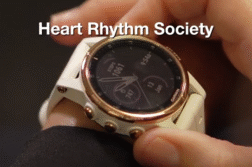COLUMBUS, Ohio (Ivanhoe Newswire) – The CDC reports that more than 12 million people in the U.S. will have atrial fibrillation, aFib, by 2030 – that’s when the heart beats too slowly, too fast, or in an irregular way. If left untreated, it can cause a stroke and heart failure. Medication can help, as well as surgery, but there is a risk associated with it that can be life threatening. A brand-new device is making that surgery safer.
Washing dishes, making lunch, walking – simple things wore Amanda Mitchem out.
“I could be just sitting, and I just felt like I had ran a 10-mile run,” Amanda recalls.
She chalked it up to aging and being overweight. Amanda’s shortness of breath was actually atrial fibrillation, or aFib. The upper chambers of her heart were beating irregularly. Blood was not flowing properly to the lower chambers. When medications didn’t work, her best option was a heart ablation.
Emile Daoud, MD, formerly at The Ohio State University, says, “The technique is designed to deliver energy on the back of the heart wall to eliminate the electrical short circuits.”
While it’s effective, the thermal heat can also cause a hole in the esophagus.
“The patient will leave the hospital, they’ll feel well, then they’ll, kind of, slowly develop symptoms,” Dr. Daoud says.
It can be fatal, that’s why electrophysiologists at The Ohio State University helped design the ESOlution – a device that’s inserted down a patient’s throat, moving the esophagus away from the heart during an ablation.
“When you move it to the right, the left wall gets pulled along, also because of the suction. So, you move this entire segment,” Dr. Daoud demonstrates.
A clinical trial found approximately 33 percent of patients had esophageal injuries, but with the new device, less than five percent had any injury.
Amanda went from not being able to wash dishes to feeling good enough to go see her granddaughter in West Virginia.
“I mean, it was like night and day. I mean, the breathing was so much better,” Amanda says with relief.
Doctors at The Ohio State University believe that moving the esophagus may also improve the effectiveness of the ablation procedure. With the esophagus out of the way, doctors can safely deliver larger amounts of ablation energy when it’s needed. Doctors hope the ESOlution gets FDA approval this year.
Contributors to this news report include: Marsha Lewis, Producer; Kirk Manson, Videographer; Sharon Dennis, Editor.
To receive a free weekly e-mail on medical breakthroughs from Ivanhoe, sign up at: http://www.ivanhoe.com/ftk
Sources:
https://www.cdc.gov/heartdisease/atrial_fibrillation.htm
https://www.cdc.gov/heartdisease/images/AFib-Animation.gif
MEDICAL BREAKTHROUGHS
RESEARCH SUMMARY
TOPIC: PIONEERING SAFE AFIB SURGERY
REPORT: MB #5333
BACKGROUND: Atrial fibrillation (AFib) is a common heart rhythm disorder characterized by an irregular and often rapid heartbeat. In a normal heart, the electrical signals that regulate the heartbeat follow a coordinated pattern. However, in individuals with AFib, the atria (upper chambers of the heart) quiver instead of contracting effectively, leading to an irregular heartbeat. AFib affects over six million Americans every year, and that number is expecting to jump to over 12 million by the year 2030. There are three different types of AFib: paroxysmal AFib, persistent AFib, and long-standing persistent AFib. Risks for AFib are being over the age of 50, high blood pressure, obesity, male gender, sleep apnea, and/or tall height.
DIAGNOSING: Symptoms of AFib include, but are not limited to: palpitations, chest pain, dizziness, fatigue, lightheadedness, reduced ability to exercise, shortness of breath, and/or weakeness. Doctors can diagnose AFib with a series of tests that include blood tests, ECGs or EKGs, a Holter monitor, an event recorder, an implantable loop recorder, an echocardiogram, exercise stress tests, and/or chest X-rays. Some causes of AFib are a congenital heart defect, a heart attack, pneumonia, or coronary artery disease.
(Sources: https://www.mayoclinic.org/diseases-conditions/atrial-fibrillation/symptoms-causes/syc-20350624
https://www.mayoclinic.org/diseases-conditions/atrial-fibrillation/diagnosis-treatment/drc-20350630)
NEW TECHNOLOGY: Electrophysiologists at The Ohio State University Wexner Medical Center invented a new device to treat AFib, called ESOlution. According to their website, “To reduce the risk of damage to the esophagus, the concept of physically moving the esophagus away from the catheter tip during an AFib ablation procedure was developed. A clinical trial in the United States and Argentina showed that using the device significantly reduced injury to the esophagus without any adverse effects.”
(Source: https://wexnermedical.osu.edu/mediaroom/pressreleaselisting/afib-mmr)
FOR MORE INFORMATION ON THIS REPORT, PLEASE CONTACT:
Amy Colgan
If this story or any other Ivanhoe story has impacted your life or prompted you or someone you know to seek or change treatments, please let us know by contacting Marjorie Bekaert Thomas at mthomas@ivanhoe.com




